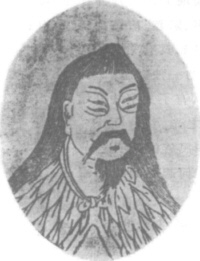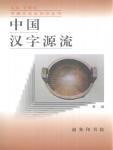Chapter 1 Chapter 1 The Origin of Chinese Characters
In China, there is an ancient legend——
An old man sat upright on the ground.His face is very strange: the brow bone is raised, and there are four eyes inlaid around it!There is still a bright light in each eye, shining on a pile of graphic symbols in front of you.At this time, it was the dead of night, and everything was silent; suddenly, there was a loud "crash", followed by a rustle, as if it was raining heavily.But upon closer inspection, it was millet and millet!From places far or near, there was the sound of "jiujiu" crying from time to time. It turned out that the gods and ghosts were sad...
This is the story in ancient China about Cangjie [jiejie]'s creation of characters, "It rains millet in the sky, and ghosts cry at night" ("Huainanzi·Ben Jingxun").The saying that Cangjie created characters is recorded in many ancient Chinese books.Until the Song Dynasty in the 10th century A.D., a scholar Ye Mengde (1077-1148 A.D.) wrote a notebook called "Swallows in the Stone Forest". Sacrifice Cangjie and respect him as the god of writing (Figure 1).

Figure 1 Portrait of Cangjie
It can be seen that the saying that Cangjie created characters has a long history in China.Many people believed that Cangjie was the official historian of the Yellow Emperor, and even simply regarded him as an ancient emperor.It is said that his surname was Hou Gang and his first name was Jie; because he was from Chencang (now Baoji, Shaanxi), he was called "Cangjie".
According to this kind of legend, characters are created by special people, and they have magical powers, which can make the ghosts and gods of heaven and earth fear them.Therefore, the psychology of the Chinese folk in the early days was generally in awe of words and even the paper on which they were written.From the old capitals to the backcountry, you can see warning posters of "respect calligraphy and paper" everywhere.The common people respect those who can read and write.
With the development of science, we now know that a writing system such as Chinese characters cannot be created by one person at a time. It is gradually invented and accumulated by the masses in the long-term production and life, so as to achieve mutual recognition and common use ( This is called "convention"), and it was formally formed.Of course, we do not deny that individual people consciously put in more labor in this process and played a greater role in the formation of the Chinese character system.The inventions and creations of many things in Chinese history have a similar process.The ancestors often attributed these invention rights to a certain legendary figure.Chinese characters were invented by Cangjie, just like saying that planting crops began with Houji (jiji).Xun Qing, a thinker in the Warring States Period, said in "Xunzi Jiemu Pian": "There are many people who are good at books, but Cangjie is the only one who passes them on." , One.” He believes that what Cangjie is to writing, and Houji is to crops, is only because of his more dedicated efforts and greater achievements, so his reputation has spread.This view can be said to be more objective and wise, and it is also in line with the general law of the emergence and development of things.
Regarding the origin of Chinese characters, there are two more influential theories in China: one is that Fuxi (Fuxi) created gossip, and the other is that Shennong "knotted ropes for governance" ("Shuowenjiezi·Xu").Like the Yellow Emperor, Fuxi and Shennong are emperors in ancient Chinese mythology.

Figure 2 Bagua and its meaning
Eight trigrams are the eight basic figures used by the ancients for divination, consisting of the symbols "—" and "——".See Figure 2 for the names of these graphics and what they represent.Arrangement and combination of these graphics can express more complex meanings.One of the oldest classics in China - , has a systematic exposition of gossip.It is said that Leibniz (Leibniz, GW, AD 1646-1716), the famous German scientist and the pioneer who invented the computer, happily confirmed the binary numbers from 0 to 63 from the gossip images.
Knotting events can be said to be a stage that many nationalities have experienced before the generation of writing.The Peruvian Indians in South America have the so-called "knot language", which is very particular and has been used for a long time (Figure 3).The Hani people in Yunnan, China, still used knotted ropes decades ago. For example, both sides of the purchase and sale of land each hold a hemp rope, and the number of knots tied according to the price of the land will be used as a certificate in the future.The shape of some numbers in ancient Chinese characters, such as thirty), seems to be regarded as a relic of knotting and remembering things.
Although gossip and knotting can be used to express certain information, they cannot be used to record language, so they cannot be considered to have the function of writing.
Regarding the origin of Chinese characters, we must start with the self-originating nature of Chinese characters.

Figure 1 Portrait of Cangjie

Figure 2 Bagua and its meaning

